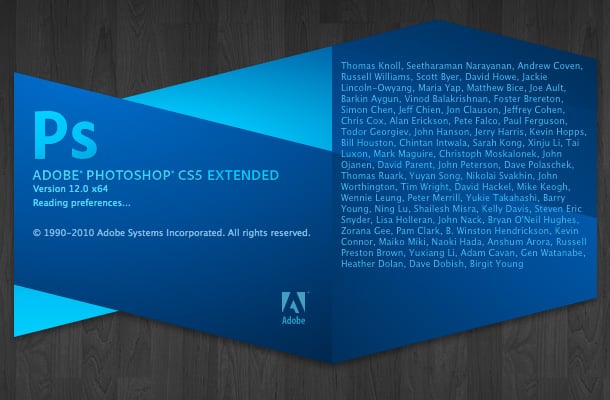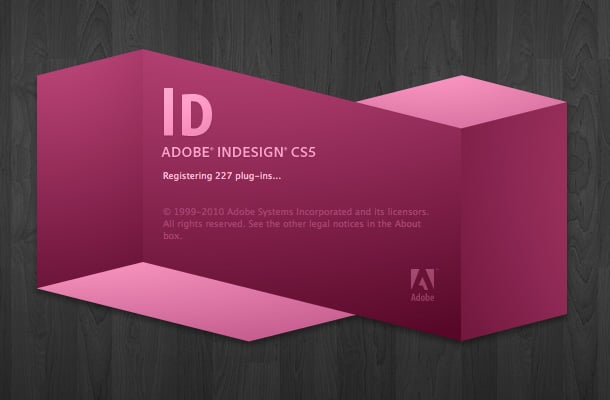
How To Design Your Business Card, A Guide for Web Designers
Everybody knows how important business cards are, they're the first impression people get of your company and they're how people will remember you, a well designed card will leave a positive impression and can mean that potential clients or business partners will hang on to your card for a long time. For web designers who may not necessarily have any background in print design, it can be tempting to just jump into Photoshop and design a card using your usual tricks but there are a few things you need to know about to design for print and avoid embarrassing and sometimes costly mess ups.
1. Setting up your document
1.1. Applications
1.1.1. Photoshop
 If you have the Adobe Creative Suite then you have a pretty good choice of applications to use, most web designers are familiar with Photoshop and luckily Photoshop does have a CMYK mode especially for print design, the main differences you will notice when you create a CMYK document in Photoshop though is that some features are greyed out, most notably the effects library.
Other annoying niggles include the fact that you'll find it difficult to get rich blacks and de-saturating images leaves them with a slight red tint rather than pure gray scale.
Of course, these things won't stop you using Photoshop for print design, and there are ways around them, so if you want a rich detailed card and a familiar environment Photoshop may be the direction for you.
If you have the Adobe Creative Suite then you have a pretty good choice of applications to use, most web designers are familiar with Photoshop and luckily Photoshop does have a CMYK mode especially for print design, the main differences you will notice when you create a CMYK document in Photoshop though is that some features are greyed out, most notably the effects library.
Other annoying niggles include the fact that you'll find it difficult to get rich blacks and de-saturating images leaves them with a slight red tint rather than pure gray scale.
Of course, these things won't stop you using Photoshop for print design, and there are ways around them, so if you want a rich detailed card and a familiar environment Photoshop may be the direction for you.
1.1.2. InDesign
 InDesign was made for print design, and it's main strong points are it's pages feature and comprehensive styles functionality, giving you a CSS-like library of document-wide character, paragraph and table styles.
Some designers swear strongly by using InDesign for all print projects, but honestly, because we're talking about the relatively small task of designing a business card some of it's high powered features are redundant.
InDesign was made for print design, and it's main strong points are it's pages feature and comprehensive styles functionality, giving you a CSS-like library of document-wide character, paragraph and table styles.
Some designers swear strongly by using InDesign for all print projects, but honestly, because we're talking about the relatively small task of designing a business card some of it's high powered features are redundant.
1.1.3. Illustrator
 Illustrator is the vector drawing application of the suite, and therefor isn't the obvious choice for a print design project but in fact it is the print designers choice for small projects and actually excels above Photoshop and InDesign for ease of use and functionality.
The latest versions of Illustrator have a feature called "Artboards" which as the name implies gives you multiple Artboards to draw on, Artboards have nothing on Pages in terms of functionality, but they are what they are, just as if you were an artist and were working on two separate sheets of paper or canvases.
For the task of creating a business card with two sides Artboards are sufficient and much more practical than two separate Photoshop documents for the front and back.
Illustrator is the vector drawing application of the suite, and therefor isn't the obvious choice for a print design project but in fact it is the print designers choice for small projects and actually excels above Photoshop and InDesign for ease of use and functionality.
The latest versions of Illustrator have a feature called "Artboards" which as the name implies gives you multiple Artboards to draw on, Artboards have nothing on Pages in terms of functionality, but they are what they are, just as if you were an artist and were working on two separate sheets of paper or canvases.
For the task of creating a business card with two sides Artboards are sufficient and much more practical than two separate Photoshop documents for the front and back.
1.2. Alternatives to Adobe
Of course, the world doesn't revolve around Adobe (as much as it may seem that way sometimes for designers) there are more affordable and even free, open source alternatives for all of the creative suite.1.2.1. Inkscape - The free Illustrator alternative
"An Open Source vector graphics editor, with capabilities similar to Illustrator, CorelDraw, or Xara X, using the W3C standard Scalable Vector Graphics (SVG) file format."1.2.2. Scribus - The free InDesign alternative
"Scribus is an Open Source program that brings professional page layout to Linux/UNIX, Mac OS X, OS/2 Warp 4/eComStation and Windows desktops with a combination of press-ready output and new approaches to page design."1.3 Document Setup
Once you've chosen your preferred application for designing your card, the first obstacle you'll encounter and possibly the most important is setting up your document.1.3.1. Dimensions and DPI
The best thing to do before you start designing your card is to check with your printers to see what guidelines they supply for artwork, the accepted standard for business cards in the US is 3.5in x 2in, either portrait or landscape, European sizes can vary a little with some printers using 85mm x 55mm, and some just sticking to the US standard. Documents intended for print should be 300DPI(dots per inch), in Photoshop and some other applications you will need to define this when you set up your document, other applications focused on print design will assume an unlimited DPI until it comes to exporting and saving the finished artwork. One thing all good printers should have in common though is that on top of the basic document size there will need be a few additional millimeters of what is called 'bleed'.1.3.1. Bleed
Bleed is print terminology for excess printing that goes beyond the cutline, in other words it's a bit of reassurance that if during the cutting process they miss then you won't be left with white borders on your card. The standard size of the bleed area in the US is 1/8th of an inch, and in Europe it varies from 2mm to 5mm, the size I encounter the most personally is 3mm, but again make sure you check your printers guidelines first.1.3.2. Safe Area
The safe area is usually a similar size to the bleed area but rather than being outside the document it is a guideline within the document that all text and images should be within to avoid being trimmed if the cutters are inaccurate. Your printers may also supply you with their safe area guidelines but if they don't just use a little common sense and avoid putting text or anything important near the edge of the card. In this example the red line indicates the bleed and the blue line indicates the safe area.
In this example the red line indicates the bleed and the blue line indicates the safe area.
2. Colors
2.1. Additive vs. Subtractive
There are two different color modes, RGB (Red, Green, Blue) and CMYK (Cyan, Magenta, Yellow and Black), the differences are in the spectrum of colors that can be achieved with each model. RGB are additive colors, meaning if you combine red, blue and green light you will get white light, and if you have none of the colors you get black or the 'off' state of your screen, this sort of process is what is used for computer monitors and TV sets etc. CMYK are subtractive colors, and work in reverse, paper is white and if you add Cyan, Magenta and Yellow you would get black in theory, but in practice what you usually end up with is brownish, murky color, due to the way light is reflected on paper, however if you add Black to the mix too you can get the color you're after. When you design for print your document must be in CMYK mode otherwise you can expect some pretty drastic color inconsistencies, below is a diagram of how much of the color spectrum can be achieved with each color model.
2.2. Color percentages
When designing for print, you need to bear in mind that whenever you add color to your canvas, the printers will be adding that color to a sheet of paper - it's basically virtual ink, and although you'd love to just pile on color freely, and get a bit creative your printers won't always appreciate your efforts. In the CMYK color mode, C, M, Y, and K each have a percentage value which indicates how much of that particular ink is being applied to create your color combination. A simple example of this practice is: C: 100 M: 0 Y: 0 K: 0 which will equal perfect or 'process' Cyan. -or - C: 0 M: 50 Y: 100 K: 0 which will create Orange, by mixing half strength Magenta with full strength Yellow So what have the printers got against you using all their ink? Well, the answer is nothing in particular, ink is there to be used and you are paying for it. The issue is to do with drying time and the wetness of the card, if you were to apply a small amount of ink to paper ie. with a Biro it will dry instantly, however if you use a cartridge pen, or for the more discerning amongst us, a quill, then you face the risk of smudging the ink or if the paper absorbs too much of the ink it can get wet and therefor weak and flimsy, the same principles apply in design for print. How much is too much? The unwritten rule is that anything up 300% total is acceptable, so C: 75 M: 75 Y:75 K: 75 or a variation that which equals up to 300 is fine.2.2.1. Rich Black
Continuing with the theory of color percentages lets think about how to get a nice strong 'true black'. Of course you'd think C: 0 M: 0 Y: 0 K: 100 or 100% black sounds good right? Well, contrary to what Adobe applications and your deceptive screen would have you believe no it's not, although it may display very black by default in the Creative Suite applications, in order to get true black you need to use the combination C: 50 M: 50 Y: 50 K: 100, the reasoning behind this is to do with how much light the ink on the page absorbs, the more ink on the page equals more light getting absorbed and darker color achieved. To get InDesign to display blacks correctly make sure you set your preferences properly or else all black combinations are displayed as rich black If we were to delve into deeper details here we could discuss the different types of black achievable for example C: 75 M: 35 Y: 40 K: 100 creates a "Cool Black" and "Warm Black" is C: 35 M: 60 Y: 60 K: 100.
If we were to delve into deeper details here we could discuss the different types of black achievable for example C: 75 M: 35 Y: 40 K: 100 creates a "Cool Black" and "Warm Black" is C: 35 M: 60 Y: 60 K: 100.
3. Material & Processes
3.2. Materials
If you're thinking about really making a strong impression and want to break away from the mold, talk to your printers about their material options, it's possible to print on almost anything nowadays but before you spend hours designing a crazy dumbbell business card (as a friend of mine did at university as a terribly impractical gimmick for a gymnasium) make sure your printers can accommodate your ideas, and if they can't, look somewhere else or compromise.3.2. Coatings
Coatings are a nice and easy, affordable option for making your card stand out without going overboard with materials. The most common coatings are matt and gloss effect laminates applied to whole card, but coatings such as Spot UV can create an ultra glossy finish that is only applies to sections of the card, Spot UV looks great on black and other dark colored cards.3.3. Special Processes
Again, this is another one to ask your printers about, Letterpress is a form of relief printing that gives a beautifully elegant finish to a card by coating plates in ink and pressing them to the card to create an impression. This process carries the additional cost of getting the plates made to stamp your design. Simpler, more accessible options include custom shaped designs, perhaps, circular or in the shape of your logo or mascot and adding rounded corners to your basic design.4. Information to include
4.1. Branding
This should be fairly obvious, but make sure that you take cues from your existing promotional media when branding your card, of course you'll want to put your logo on there but remember not to neglect color schemes, font usage and the atmosphere of the card too.4.2. What you do
You should always mention what you do, and I find that being more specific about what you do actually helps a lot as well, for example imagine you're one of your own potential clients and you need a new website, you have two business cards in your hand, one for "J. Doe, Creative Professional" and one for "J. Doe, Web Designer" which would you call first for the task at hand? Just don't limit yourself too much with your role, "J. Doe, Designer of Yellow and Purple Websites" is taking it a bit too far.4.3. Personal information
The information that you choose to put on your business card boils down to how you want people to contact you, it is recommended that you supply different ways for people to get in touch with you and be flexible with your communication channels. A good base to work off is phone number, email, website url, and address. If you do find email impersonal though or if you feel awkward talking on the phone and think it could portray a less professional image of your company then focus on how you actually want people to contact you.5. Sending file to print
5.1. File formats
File format requirements vary from printer to printer, some printers may require the original design files and any fonts or images used where as others will accept a 300dpi PDF, very few printers will refuse a PDF, so if you're printers won't accept PDFs question them as to why because it could be a sign of non-professionalism if they want Jpegs or other bitmap formats. Note: if you do supply a bitmap image (JPG, TIFF, PNG etc.) your text won't be vector sharp, so make sure your DPI is very high, around about the 600 mark to compensate.5.2. Where to send it
5.2.1. Local Printers
Some designers prefer to build a relationship with their local print firm, other are willing to look at the slightly wider area for a high quality printers with a good rep, both of these have great advantages if you're a regular printer because you can familiarize yourself with how that particular firm operates and learn to take advantage of their methods5.2.2. Online Services
Another option is to consider online printers, the advantages are obvious if you're looking for simplicity and minimal effort for small print runs, the fact that online services are usually far more popular than your local guy means they can usually undercut on price too, my online service of choice is moocards.6. Inspiration
Here are some examples of excellent business card designs for inspiration.


















 More at Cardobserver
More at Cardobserver

Comments